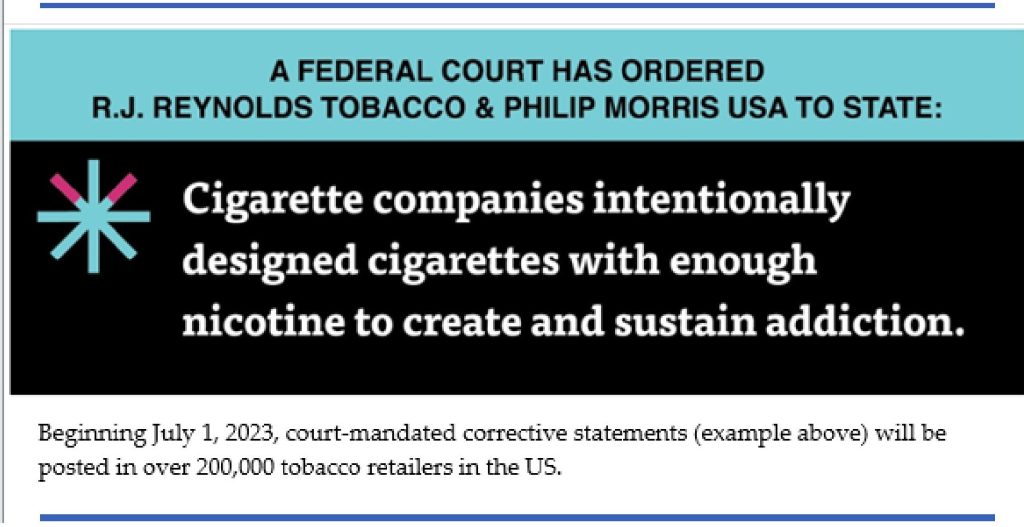World No Tobacco Day 2025
May 31st every year is set aside to remind the world of the devastating impact of tobacco on humankind and to have a conversation about what we all can do to bring an end to the tobacco epidemic.
The effort to make commercial tobacco history needs a united front from all genuine stakeholders. One key issue which continues to plague efforts to achieve a tobacco-free world, is the industry which has rightly been described as the vector of the tobacco epidemic”.
Themes for World No Tobacco Days (WNTDs) are specially curated to focus on specific factors impacting on progress in tobacco control. In 2025, the focus is on unmasking the appeal, used by the industry for what they truly are, deception!
Subscribe to my newsletter here!
Product appeal
Old and new tobacco and nicotine products are now (re)invented with ever-changing appeal created through sleek product design, youth-friendly flavours and colourful yet targeted adverts. These appeals are all a facade used to mask the nastiness of these products. These appeals are also mostly targeted at young people who are what the industry described as “replacement smokers” in one of their historic documents. These products are therefore engineered to initiate and keep people addicted to nicotine, and at a very young age.

Aside attracting young people, the tobacco and nicotine industry also design these products to evade regulations while claiming that they are all for “sensible regulations”. History has shown that what the industry regards as a “sensible regulation” is synonymous with a “weak regulation” that would do little or nothing to prevent and protect children and youth from initiating tobacco and other nicotine products use.

Deceptive product design and marketing
Products with sleek designs, colorful packages, assorted flavours are marketed through attention-catching advertisements and are now being packaged as “safer products”. Health warnings are minimalized or completely absent and features are made to resemble healthy products in their taste and look. Such designs are made to deceive both the health-conscious generation and unsuspecting governments/policymakers. In many cases these products are introduced into markets without the necessary legislation in place to keep manufacturers and marketers in check.
Subscribe to my newsletter here!
The industry promotes products such as e-cigarettes (vapes), nicotine pouches and heated tobacco products as “less harmful” while funding research to downplay their health risks. They also use new media and influencer sponsorships, to target children and youth, projecting the use of these products as attractive and socially acceptable. In reality, these products are designed to sustain the nicotine addiction market. Small but colourful stalls and kiosks are set up in bustling malls especially in cities and these are strategically positioned to be seen by all, children and adults alike.

Greenwashing new products while aggressively marketing the old
While the industry carries on “greenwashing” their new products through hijacking the concept of drug ‘harm reduction’, they continue to rake in the largest share of their profits from tobacco products, particularly cigarettes. The industry continues heavily marketing cigarettes to get more children and youth to initiate and perpetuate smoking even after publicly admitting that these products are deadly.
The industry promotes youth initiation of cigarette smoking to cultivate a new generation of customers while positioning themselves as the solution to the tobacco epidemic, a problem they have been responsible for since the past 100 years! One can say that the industry is indeed addicted to the profits they get from killing over 8 million people yearly: smokers and non-smokers alike.
Subscribe to my newsletter here!
“Grooming”: A new advertising trend
Another trend used by the tobacco and nicotine industry has been through leveraging technology, to amplify the advertisement of their products and their appeal, through sophisticated digital marketing strategies. Both old and new media are being used to achieve this.

New tactics, old media
There is a new trend of using traditional media to advertise products using non-direct means which include product placement as well as characterization of an actor or actors initiating tobacco or nicotine product use. This phenomenon have been identified in a popular soap opera (tv drama series) and podcast aired in South Africa.
This method includes scripts written into popular programmes to show how children can initiate cigarette smoking and the use of nicotine pouch. For the Soapy, the catch is that the script embellishes this characterization amidst negative social reactions (in the script), to project an image that this is just another scene of deviant adolescents trying out risky behaviours.
Scenes are even added to the programme to show the negative consequences of using these products. However, key scenes displaying flavour choice, how to manage coughing while trying these products for the first time, how not to get caught by parents/significant others, and how to pressure peers to be part of this behaviour together with the display of actual products are creatively crafted into these scenes.

Such sleek advertisements make it almost impossible for a non-suspecting public to understand that this is not just the usual product placement or advertisement but what I have now termed “grooming” of children to initiate cigarette smoking. It is important for media houses to see these scenes for what they truly are (that is if they already do not know this) and put the interests of children first when curating their programmes. Profits should not come before the health and wellbeing of children.
“Grooming” with new media
For new media, the industry utilizes influencers and viral campaigns to normalize nicotine consumption and promote their new products. The social media algorithms further enhance this by analyzing user behaviour to deliver targeted ads, ensuring that product-related contents reach specific demographics that may be most vulnerable to nicotine addiction. A factor which aids this trend is the fact that unlike traditional media, digital platforms lack stringent advertising regulations in many countries around the world. This is exploited by these companies to circumvent advertising bans and promote their products more freely thus bypassing legislative restrictions on product advertising.

Conclusion
The combination of unregulated or poorly regulated digital space and the emergence of artificial intelligence to create more sleek marketing strategies highlight the urgent need for an update to tobacco policies around the world to take into cognizance, these new advertising avenues and tactics.
Unmasking the Appeal is an attempt to pull back the curtain on tobacco and nicotine industry manipulation and amplify public health voices advocating for stricter policies, public awareness and a tobacco and nicotine-free future.
(#WNTD2025)
Subscribe to my newsletter here!
